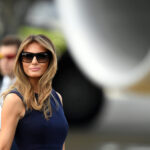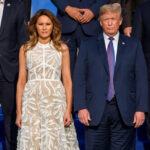On Monday, March 18, 2024, Thomas P. Stafford, a revered astronaut known for his pioneering role in U.S. space missions and significant contributions to U.S.-Soviet space collaboration, passed away at the age of 93.
Stafford’s exceptional service with the National Aeronautics and Space Administration (NASA) and his influential role in advancing international space relations have left an enduring legacy.
Born in Weatherford, Oklahoma, Stafford, an esteemed retired Air Force Lieutenant General, was drawn to flight and space exploration from an early age. This interest drove him to join NASA’s second group of astronauts in September 1962.
Stafford’s foray into space history was highlighted by his leadership of the Apollo 10 mission in May 1969. This mission, a vital precursor to the Apollo 11 moon landing, involved Stafford, along with his crewmates, John W. Young and Eugene A. Cernan, drawing within nine miles of the moon’s surface. The Apollo 10 mission tested essential landing components and maneuvers and set a record by reaching a speed of 24,791 miles per hour—the fastest speed ever achieved by humans.
In addition to his remarkable role in lunar exploration, Stafford was instrumental in the Apollo-Soyuz Test Project (ASTP) in July 1975. This landmark international space flight transcended Cold War barriers and included a historic docking with a Soviet Soyuz spacecraft. The mission underscored the possibility of peaceful collaboration in space exploration, leading to a nomination for Stafford for the Nobel Peace Prize.
Following his moon missions, Stafford’s influence stretched into the strategic planning and supervision of NASA’s programs. He served as the Chief of the Astronaut Office, steering the Apollo and Skylab programs, and was instrumental in the Hubble Space Telescope’s first servicing mission, correcting its optical issues and ensuring its longevity as an astronomical observatory.
Stafford’s military career, highlighted by his stewardship of the Air Force Flight Test Center and his command over the Groom Lake Test Facility, also known as “Area 51,” demonstrated his commitment to advancing military aviation and space technologies. His work played a significant role in the creation of stealth aircraft and the Space Shuttle’s Approach and Landing Test Program, illustrating his capacity to merge military precision with the spirit of space exploration.
Stafford’s accomplishments were acknowledged through numerous awards and recognitions, showcasing his extraordinary contributions to space exploration and international diplomacy.











